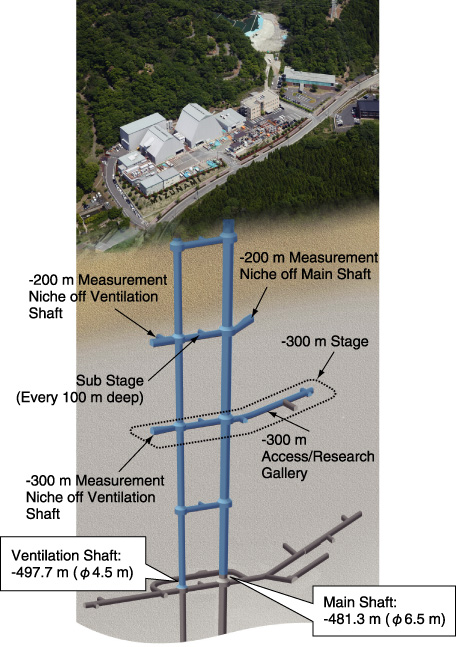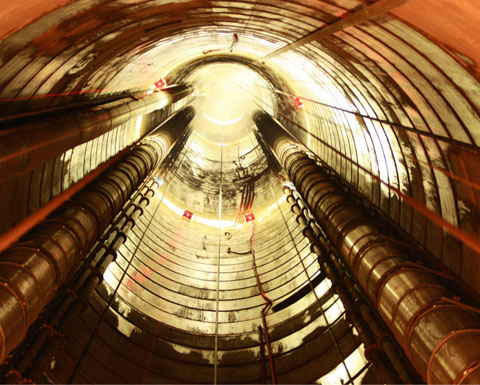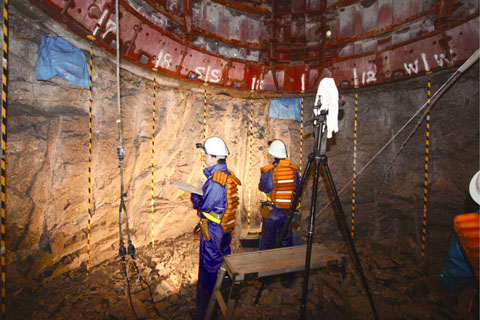
Fig.12-26 Layout of the Mizunami Underground Research Laboratory

Fig.12-27 View from inside of the Main Shaft: upward perspective

Fig.12-28 Geological mapping underway in the Ventilation Shaft
The Mizunami Underground Research Laboratory, one of the main facilities in Japan for the research and development of technology for high-level radioactive waste disposal, is currently under construction in Mizunami City. As of March 2011, the excavation of the Main and Ventilation Shafts had reached GL -481.3 m and -497.7 m, respectively (meters below ground level, Fig.12-26, Fig.12-27 and Fig.12-28).
・ Excavation of Main Shaft (from GL -459.6 m to -481.3 m)
・ Excavation of Ventilation Shaft (from GL -459.8 m to -497.7 m)
In order to mitigate potential excess groundwater inflow, pre-excavation grouting was conducted before the excavation of the Ventilation Shaft from GL -421 m to -428 m and from GL -446 m to -453 m. Grouting refers to the injection of material such as cement, into open fractures in a rock mass to stabilize and seal the rock.
While planning the construction, it was necessary to obtain reliable, preliminary information on the bedrock conditions in terms of the rock mass stability and hydrogeology, and therefore site characterization borehole investigations, including pilot borehole drilling were conducted before the excavations began. The results indicated that large groundwater inflow could be expected during the excavation of the Ventilation Shaft at around GL -200 m and from GL -400 m to GL -460 m and near the -300 m Access/Research Gallery.
While planning the construction, the water-inflow reduction target was established by theoretical analysis of groundwater flow with respect to the bedrock conditions. The subsequent excavations have shown that the pre-excavation grouting was successful, and that the targeted reduction in inflow was achieved. Thus, the results indicate that this methodology is effective in reducing water inflow.